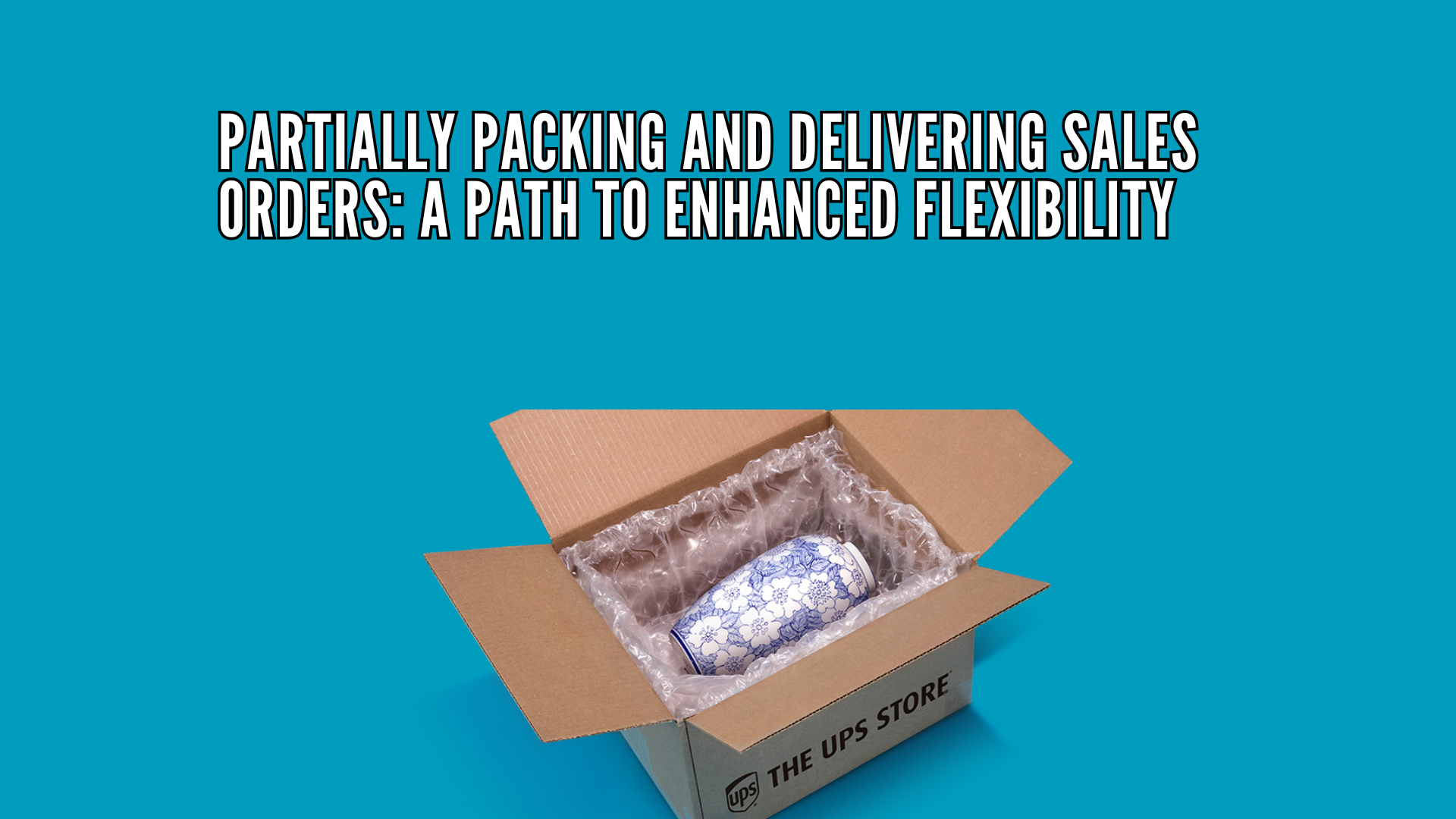In the fast-paced world of e-commerce and logistics, meeting customer expectations is paramount. However, businesses often face challenges when demand exceeds supply or when there are delays in the supply chain. One effective strategy to navigate these challenges is the practice of partially packing and delivering sales orders. This approach can significantly enhance a company’s flexibility and responsiveness, providing numerous benefits for both the business and its customers.
What is Partial Packing and Delivery?
Partial packing and delivery is a logistics strategy where orders are fulfilled and shipped in multiple shipments rather than waiting for all items to be available. This can occur for various reasons, such as inventory shortages, staggered arrivals of products, or customized orders that take different times to complete. The essence of this approach is to get available items to the customer as quickly as possible, even if the entire order cannot be shipped at once.
Benefits of Partial Packing and Delivery
1. Improved Customer Satisfaction
In today’s competitive market, customer satisfaction is crucial. Customers appreciate receiving their items as soon as possible, even if it means receiving their order in multiple shipments. This approach can reduce frustration and improve the overall customer experience, leading to higher retention rates and positive reviews.
2. Enhanced Inventory Management
Partial shipping allows businesses to optimize their inventory management. By shipping available items immediately, companies can free up warehouse space and reduce the holding costs associated with storing products. This practice also helps in maintaining a better flow of goods through the supply chain.
3. Increased Cash Flow
Fulfilling parts of an order as they become available can improve cash flow. Companies can invoice customers for each partial shipment, leading to quicker revenue recognition. This can be particularly beneficial for businesses with long production or delivery cycles.
4. Greater Flexibility and Responsiveness
In a dynamic market, flexibility is key. Partial packing enables businesses to respond swiftly to changes in supply and demand. Whether dealing with supply chain disruptions or sudden spikes in demand, companies can keep their operations running smoothly by adapting their shipping strategies.
5. Competitive Advantage
Offering partial shipments can provide a competitive edge. Customers are more likely to choose a company that can deliver items faster, even if it means receiving them in multiple packages. This capability can differentiate a business from its competitors, particularly in industries where speed is a critical factor.
Challenges and Considerations
While partial packing and delivery offer many benefits, it is not without challenges. Businesses need to consider several factors to implement this strategy effectively:
1. Shipping Costs
Multiple shipments can lead to increased shipping costs. Companies need to evaluate whether the benefits of faster delivery outweigh the additional expenses. Implementing a cost-effective shipping strategy is essential to avoid eroding profit margins.
2. Coordination and Communication
Effective coordination and communication are vital. Customers should be clearly informed about the partial shipments, including what items are included in each shipment and their expected delivery dates. This transparency helps manage expectations and reduces confusion.
3. Inventory Tracking
Accurate inventory tracking is crucial to prevent over-committing or under-delivering. Businesses must have robust inventory management systems to monitor stock levels in real-time and ensure that they can fulfill orders as promised.
4. Packaging and Branding
Consistent packaging and branding across multiple shipments are important to maintain a cohesive brand image. Each shipment should reflect the company’s quality standards and reinforce the brand identity.
5. Return and Exchange Policies
Handling returns and exchanges can become more complex with partial shipments. Clear policies and efficient processes need to be in place to manage these situations effectively and maintain customer satisfaction.
Implementing a Successful Partial Packing Strategy
To successfully implement a partial packing and delivery strategy, consider the following steps:
- Assess Feasibility: Analyze your supply chain, inventory management, and customer base to determine if partial packing is suitable for your business.
- Develop Clear Policies: Establish clear policies and procedures for partial shipments, including how to handle shipping costs, customer communication, and returns.
- Invest in Technology: Use advanced inventory management and order fulfillment systems to track stock levels, manage shipments, and communicate with customers effectively.
- Train Your Team: Ensure that your staff is well-trained and understands the new processes and the importance of maintaining high standards throughout the partial packing and delivery process.
- Monitor and Optimize: Continuously monitor the performance of your partial packing strategy. Gather feedback from customers and analyze shipping data to identify areas for improvement and optimize your operations.
Conclusion
In an era where customer expectations are higher than ever, partially packing and delivering sales orders can provide significant benefits. This strategy enhances flexibility, improves customer satisfaction, and helps businesses manage their operations more effectively. By carefully planning and implementing this approach, companies can gain a competitive advantage and thrive in today’s demanding market.
Embrace the potential of partial packing and delivery, and watch your business adapt and grow with increased resilience and agility.









